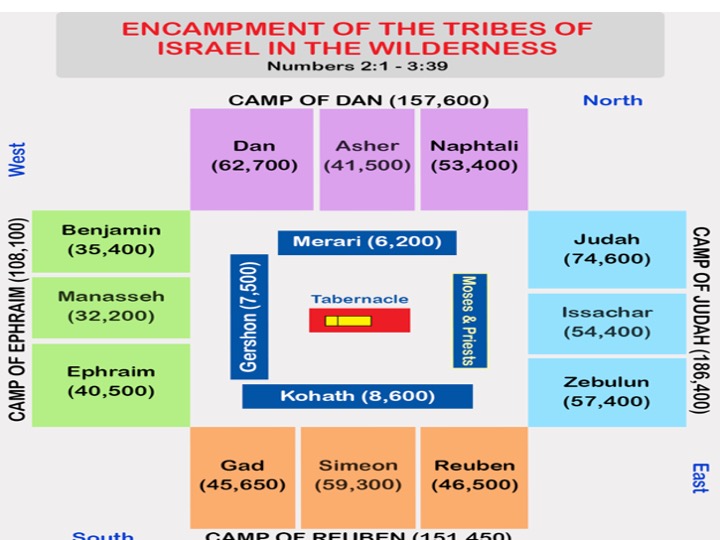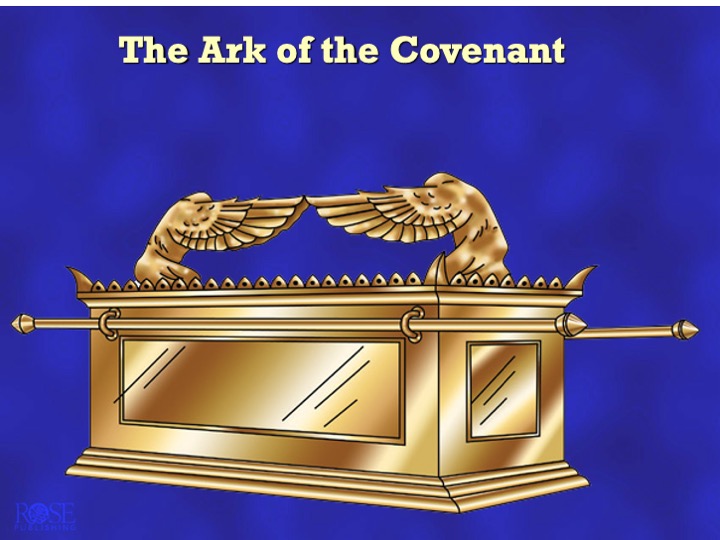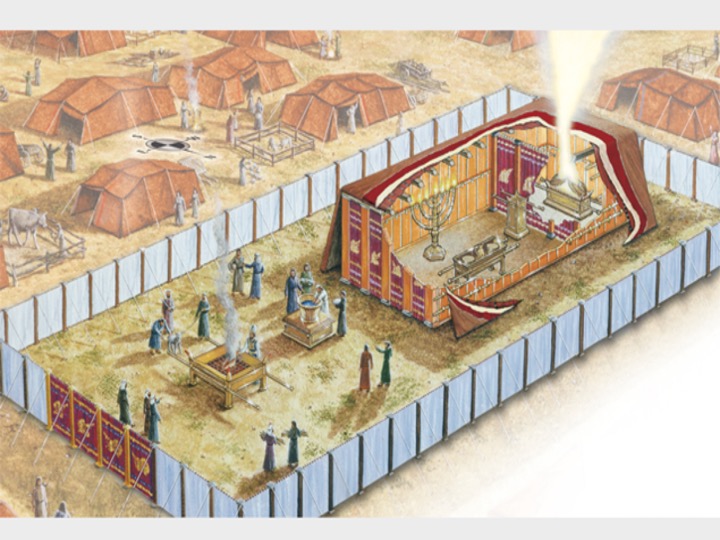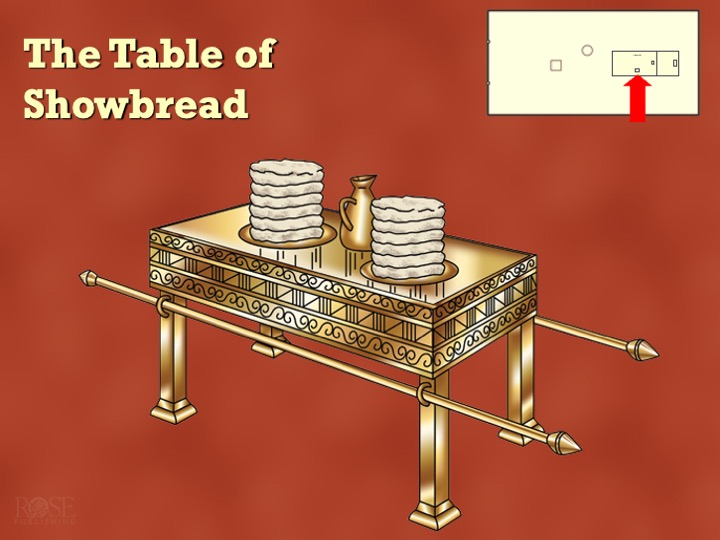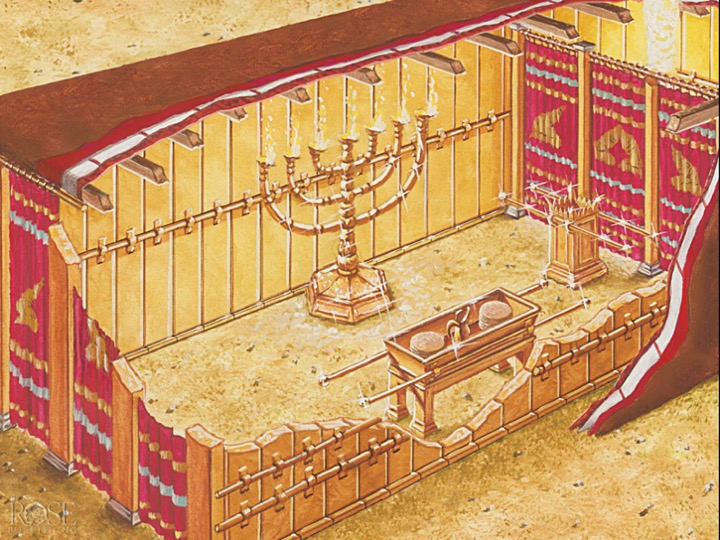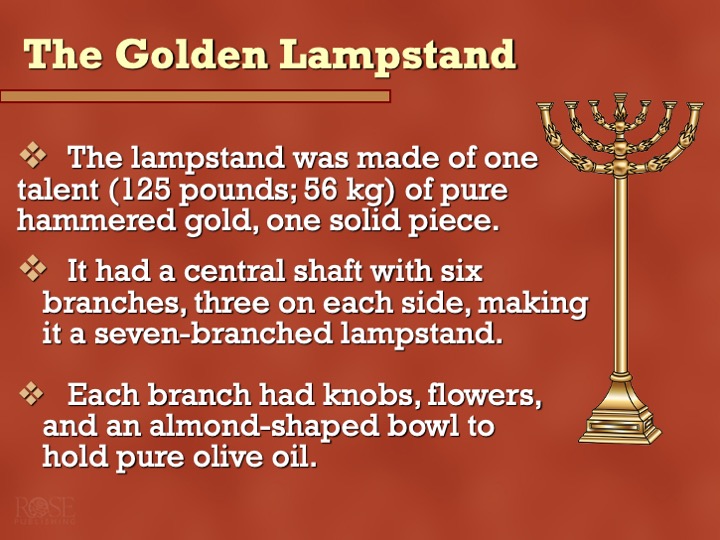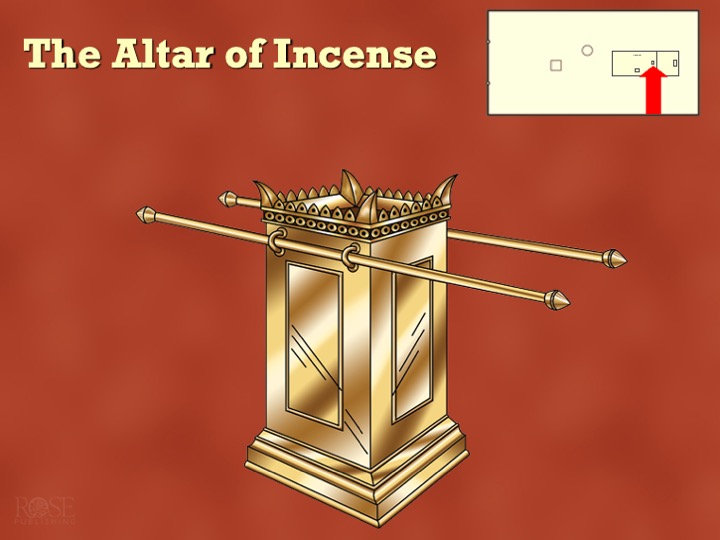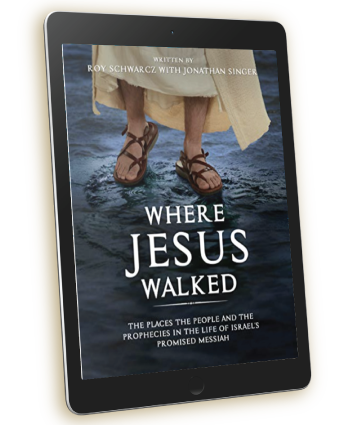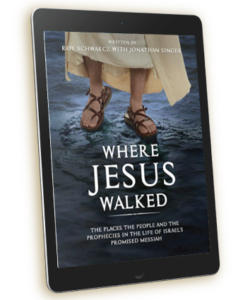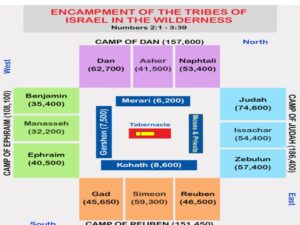
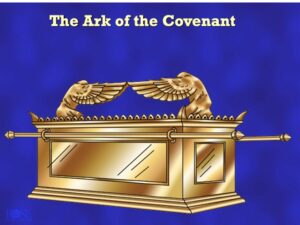
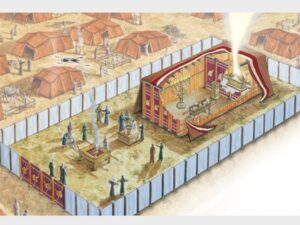
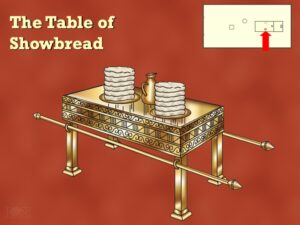
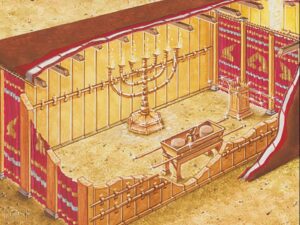
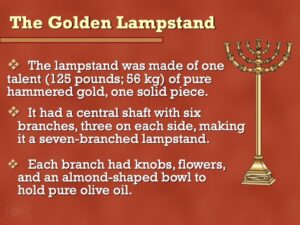
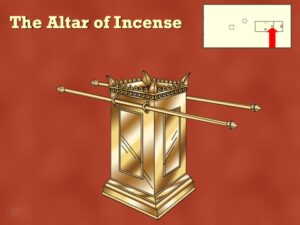
This is how the Tribes of Israel were arranged around the ark of the Covenant.
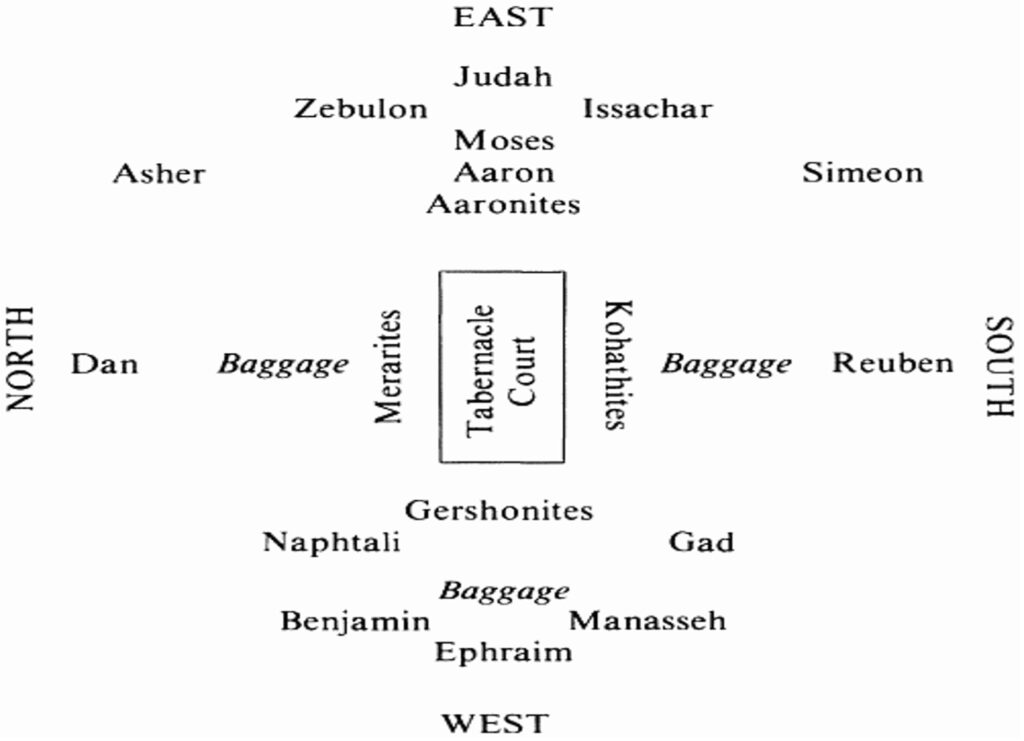
The saying “ignorance is bliss” may be true in trivial matters but if failing to ignore essential truth it can have grave consequences. This is true when dealing with the Lord, the great Creator and Sustainer of the universe. He is source of life, joy, and peace. The greatest challenge we have is to learn how to relate to God. We can’t do this in and by ourselves God has provided the way to learn about Him, and how to approach Him. This is why we are taking the time to study this portion of Scripture. The articles of the Tabernacle were an essential aspect of how man approaches God.
V 1-5 The Ark of the covenant in the Holy of Holies symbolized the throne and presence of God. Bezalel was given the privilege of making the Ark of God. The Ark was made of acacia wood and was 3¾ feet long by 2¼ feet wide by 2¼ feet high. It was overlaid with gold, inside and out. Four gold rings were fastened to the Ark’s four corners to enable the Kohanim to transport it. The Kohanim were the group of priests appointed for the ministry in the Holy Place the group of Levites descended from Aaron. The High Priest was the head of the Kohanim and the appointed by God to enter the Holy of Holies on Yom Kippur, the Day of Atonement. There were also two poles of acacia wood overlaid with gold that could be inserted into the rings for carrying the Ark. The pattern for the Ark was given by God to Moses and is picture of God’s throne in heaven.
The Scriptures have much to say about the throne of God. It is a great white throne (Rev. 20:11). It is high and glorious (Jer. 17:12). It is like a fiery flame (Dan. 7:9), surrounded by a rainbow (Rev. 4:3). It is a place of lightning, thunderclaps, voices, and fire (Rev. 4:5) like the scene when the Torah was given on Mt. Sinai (Ex 19). In front of the throne it has a sea of glass in and surrounded by twenty-four seats, with elders sitting on those seats (Rev. 4:4-6). Flowing from it is
pure river, clear as crystal, which is the water of life (Rev. 22:1). It will be here that all creation will worship and praise the God of Israel and the nations (Jeremiah 3:17; Psalm 47:8; Rev. 4:10-11).
God’s throne is the place where judgment and justice are executed (Psalm 9:7; 89:14; 97:2; Is. 9:7; Rev. 6:16). It is from God’s throne where mercy and grace, provision and comfort flow (Isaiah 16:5;
Heb. 4:16; Rev. 7:17). It’s the place where are prayers are directed (Rev. 7:15; Rev. 8:3). His throne is in Heaven (Psalm 11:4; 103:19; Isaiah 66:1; Acts 7:49). Scripture teaches us of the relationship of Yeshua the Messiah to the throne of God where He sits next to His Father (Hebrews 12:2). Where He is described as the Lamb of God that was slain (Rev. 5:6). It is where He sits as our great Kohen Gadol or High Priest (Hebrews 8:1).
V 6-9 What sets God’s throne apart from the thrones of men is that His is covered by mercy. It speaks of forgiveness, atonement and reconciliation. Only God has the authority to forgive man’s sin. We see God’s forgiveness, love and mercy embodied in Yeshua (Mark 2:5-12). On end of the Mercy Seat was a cherub made of gold and one piece with the Mercy Seat. Their wings were made upward, they face each other and are looking down on the Mercy Seat. The Cherubim are in the presence of God and His throne (Ezek 1:4ff).
V 10-16 The Table of Showbread symbolized God as the Bread of Life. Only God can satisfy our hunger both physically and spiritually. Located in the Holy Place, the table was made of acacia wood and was 3 feet long by 1½ feet wide by 2¼ feet high. It was covered with pure gold. Like the Ark of the Covenant it too had four rings made of gold fastened to the four corners of the Table. This enabled the Table to be carried with two gold covered acacia poles. The utensils used with the Table were also made of gold. They included plates, dishes, bowls, and pitchers. These were used for the table as well as for the pouring out of drink offerings.
V 17-24 In these verses we have the description of the Lampstand or Menorah, which was the only light in the Holy Place and represented the light of the Lord to His priests, so they could see as they went about their ministry in the Holy place. The Lampstand was made of one piece from 75 pounds of pure gold consisting of the base, shaft, six branches, lamp cups, buds, and blossoms. The six branches had three on each side of the center shaft or stem. Three cups shaped like almond flowers with buds and blossoms were on branch and one was on the center staffs. God’s light is a picture of His Spirit which with God’s Word lights our way that we might serve the Lord in the world.
V 25-29 The Altar of Incense was made of acacia wood and was 18 inches square and 3 feet located in front of the Veil. The altar was covered with pure gold including the top, sides, horns, and molding. Two gold rings were made and placed on each side for carrying the Altar. The carrying poles were made of acacia wood and overlaid with gold. The anointing oil and fragrant incense were made by skilled perfumers. The Altar of Incense symbolized the prayers of God’s people rising up to God and pleasing Him Prayer is the most powerful tool God gives His people, but sadly it is the least used. Perhaps it is because they’ve never learned how to approach God.

